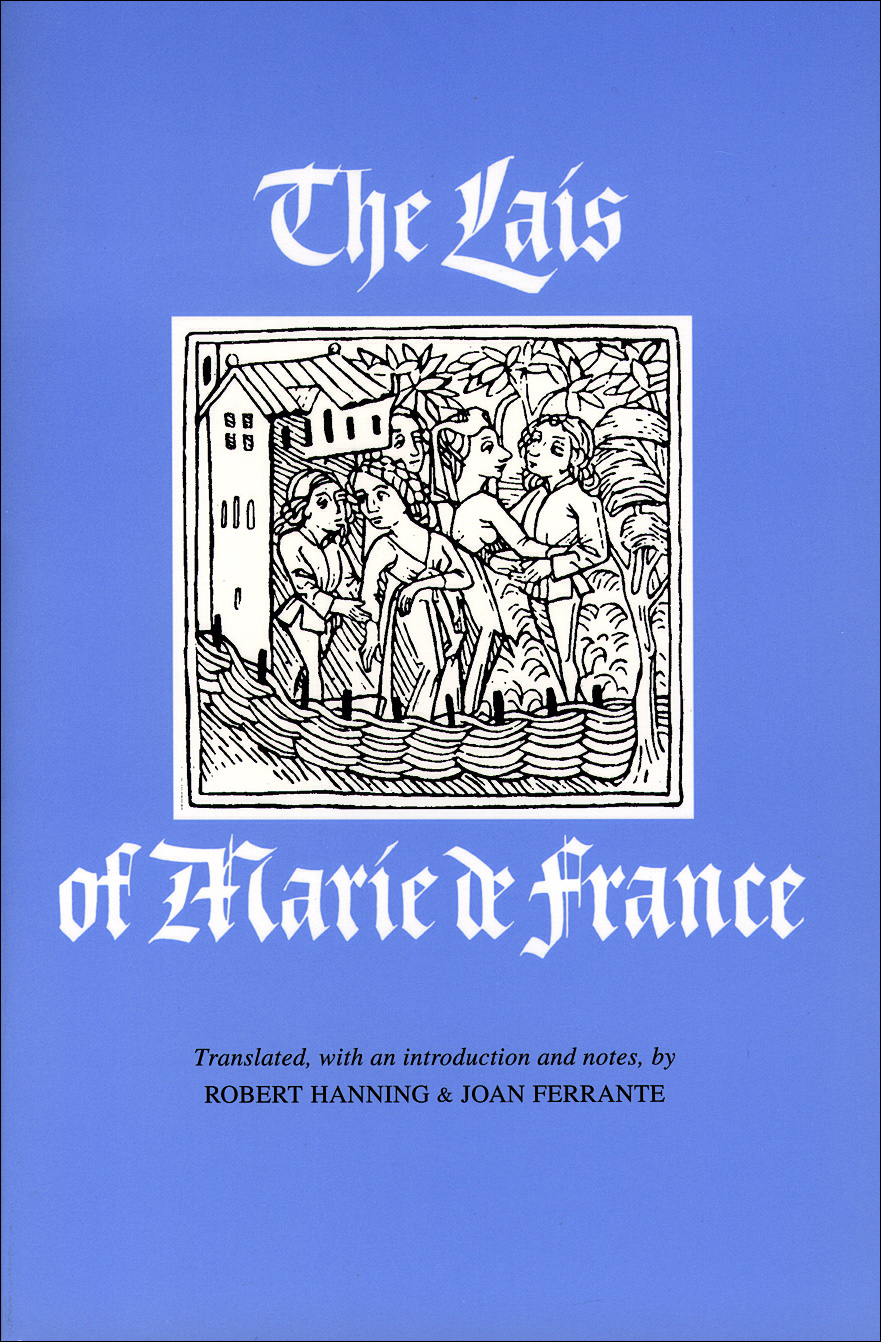who are so brave and courteous,
repository of all joys
in whose heart all goodness takes root,
I undertook to assemble these lais
to compose and recount them in rhyme.
In my heart I thought and determined,
sire, that I would present them to you.
If it pleases you to receive them,
you will give me great joy;
I shall be happy forever.
Do not think me presumptuous if I dare present them to you.
Now hear how they begin.
Marie de France is the earliest known female French poet, although we're not totally sure she's from France and it seems likely that she wrote most of her works for English king Henry II. Whatever. She claims that these brief poetic tales of love and magic are translations from Breton songs called lais, though even that is dubious. Wherever they come from, they're pretty delightful.
Mostly, they're about romantic love. The first, and my favorite, "Guigemar," is about a young knight who has no interest in women until one day he's out hunting and comes across a magical androgynous white deer. He shoots it--robbing the world of probably its only magical androgynous white deer--but the arrow rebounds and strikes him. With its dying breath, the deer curses Guigemar:
Then she spoke, in this fashion:
"Alas! I'm dying!
And you, vassal, who wounded me,
this be your destiny:
may you never get medicine for your wound!
Neither herb nor root,
neither physician nor potion,
will cure you
of that wound in your thigh,
until a woman heals you,
one who will suffer, out of love for you,
pain and grief
such as no woman ever suffered before.
And out of love for her, you'll suffer as much;
the affair will be a marvel
to lovers, past and present,
and all those yet to come.
Now go away, leave me in peace!"
In the very next moment Marie solves the dilemma that the deer has created--that is, where and how Guigemar will find the woman who will heal his wound. Distraught, he boards a magical unmanned ship that whisks him away to a faraway world where he is received by a beautiful lady, trapped in a castle by her older, jealous husband. Naturally, they fall in love and abscond together, where the hapless woman manages to get herself imprisoned by a completely different feudal jerk. Guigemar kills him and saves the day.
It's such a simple little fairy tale story, but I love the weirdness and imbalance of it. Why does Marie instantaneously solve the conflict she sets up? Why is the prison story repeated twice? I have theories about these question that I am including in a paper I'm writing for my Medieval Literature course, but those answers have very little to do with my first reaction to the strangness of "Guigemar." Chivalric literature seems in my mind so ossified--knight beats evil lord for lady's hand, repeat--that it was really compelling to see that formula twisted and upended.
Another of my favorites is "Laustic." In this lai, a married woman and her neighbor fall in love merely by seeing each other through the window of their homes. The woman's jealous husband asks her why she is always staring out the window, and she claims that she is delighting in the nightingale that sings in the tree outside. The husband, perplexingly, captures the nightingale:
...I have trapped the nightingale
that kept you awake so much.
From now on you can lie in peace:
he will never again awaken you."
When the lady heard him,
she was sad and angry.
She asked her lord for the bird
but he killed it out of spite,
he broke the neck in his hands--
too vicious an act--
and thre the body on the lady;
her shift was stained with blood,
a little, on her breast.
Awesome. After this, the woman sends the neighbor the bird's body, and he keeps it in a little iron casket around his neck for the rest of his life. As you can see, evil husbands are a frequent theme here, and Marie seems to be narratizing the contrast between the cruel formality of marriage and the power of love constructed freely between two people. It's actually a surprisingly modern/Western take on love, though at the time Marie's peers hotly debated the comparative value of marriage d'amour and marriage de convenance.
There's also a lai about a werewolf.


4 comments:
I love teaching these and students love them too. Bisclavret and Eliduc are my favorites (thanks for the moral lesson, weasels!)
Oh man, I forgot about the weasels.
Actual weasels?
"Eliduc" has a pair of weasels who reveal the secret of resurrecting the dead: http://en.wikipedia.org/wiki/Eliduc
Post a Comment